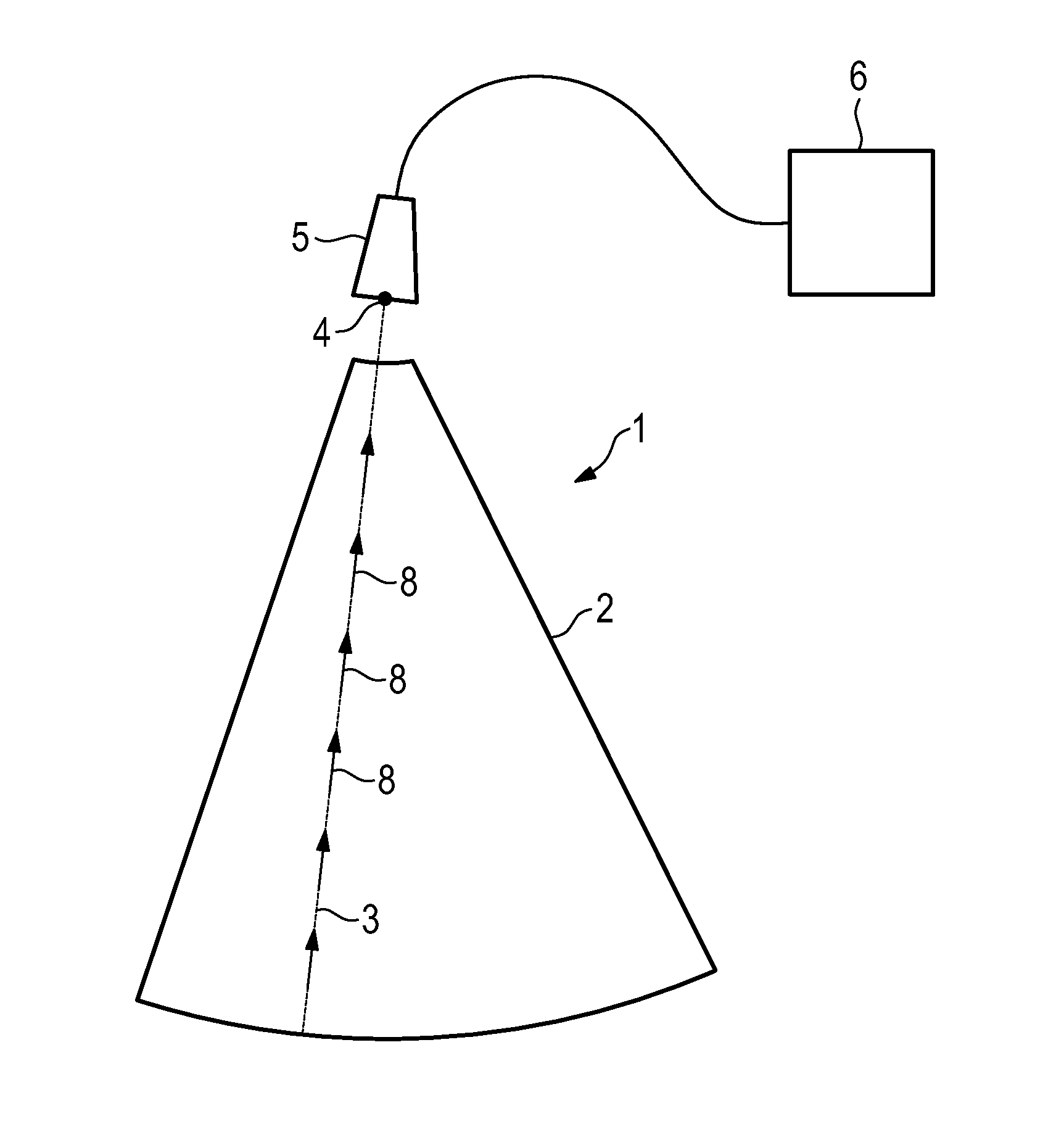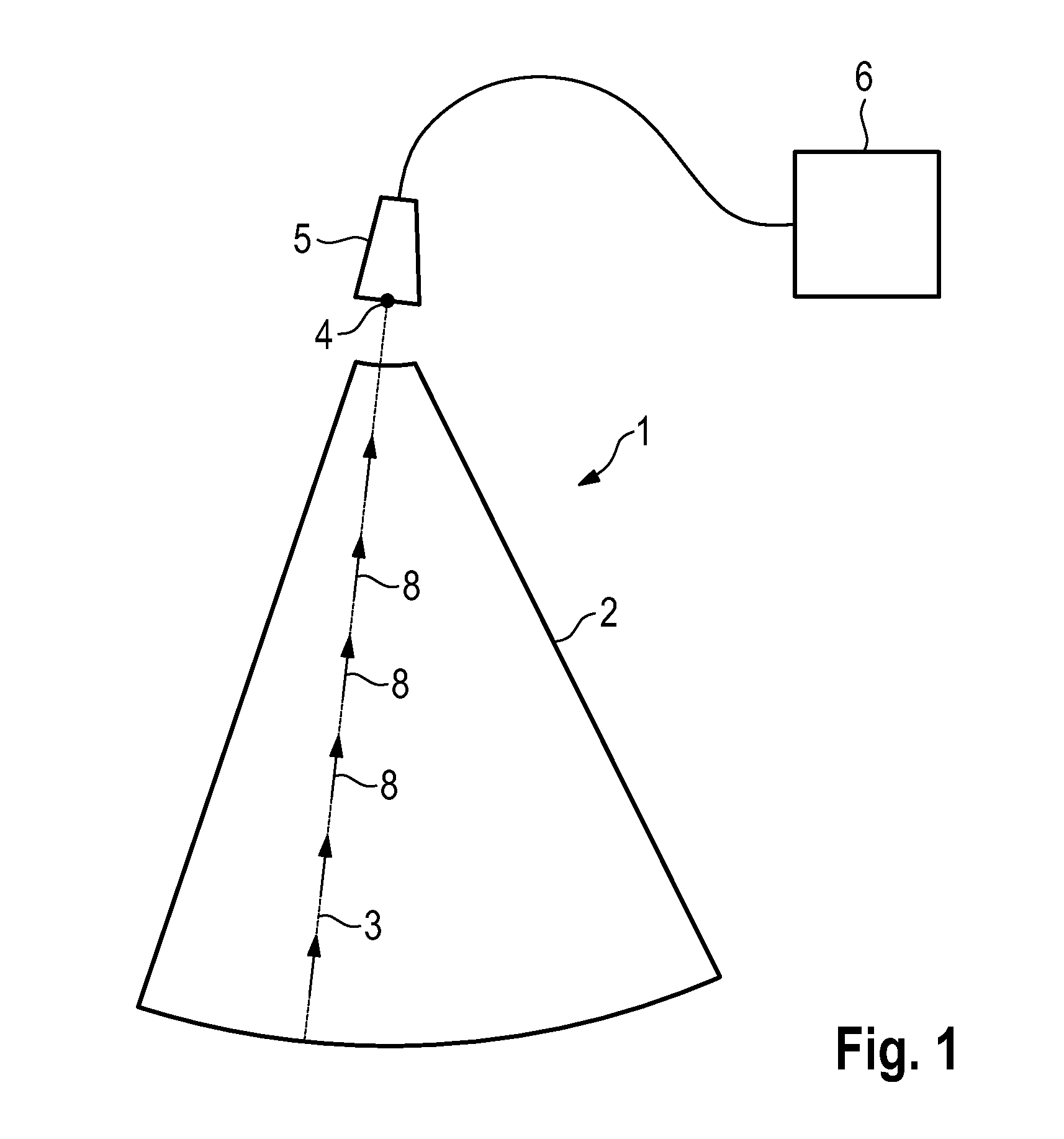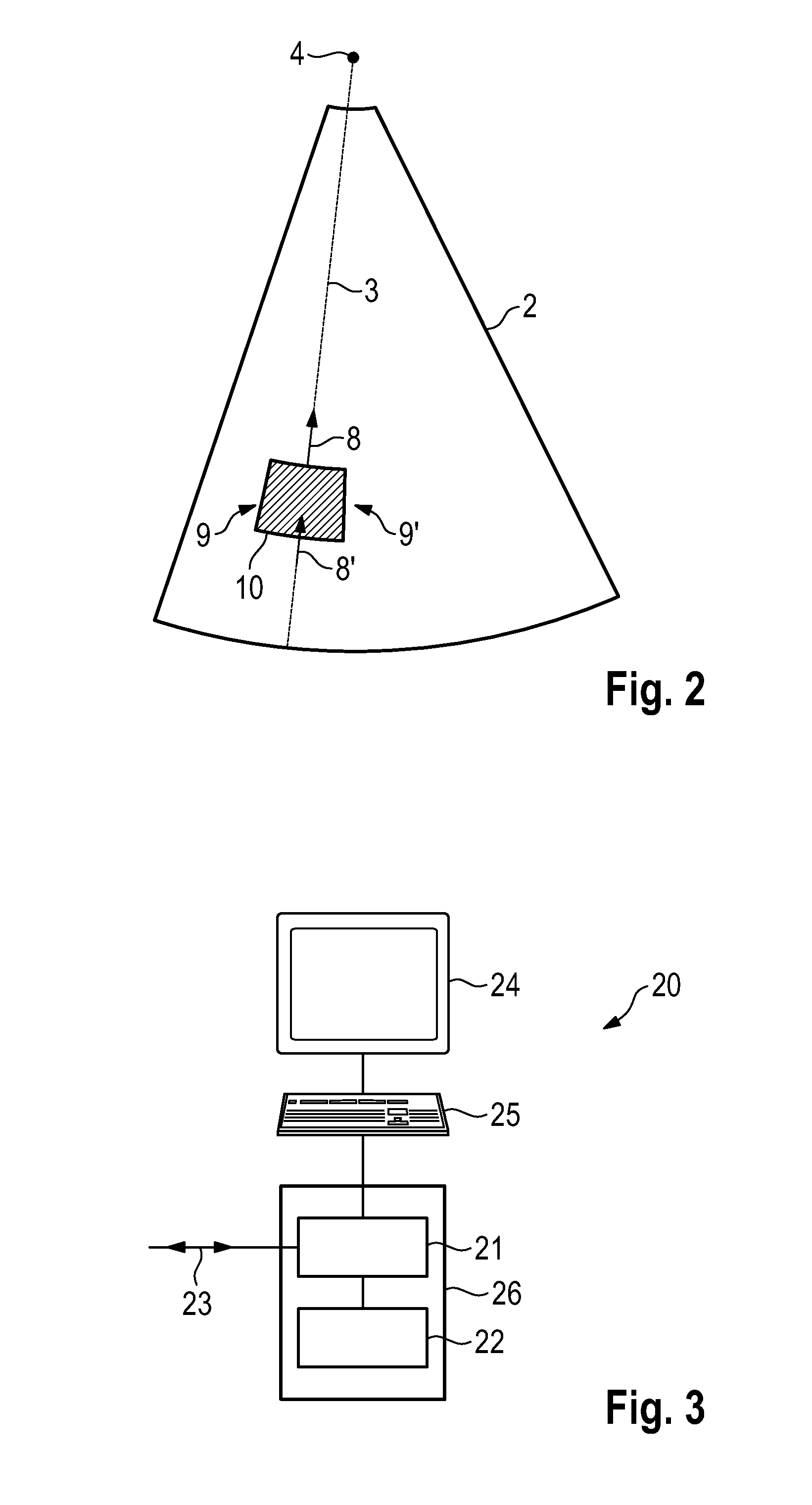Method of transforming a doppler velocity dataset into a velocity vector field
- Summary
- Abstract
- Description
- Claims
- Application Information
AI Technical Summary
Benefits of technology
Problems solved by technology
Method used
Image
Examples
Embodiment Construction
[0051]FIG. 1 is a schematic plan view of a 2D Doppler velocity dataset 1, acquired by means of an ultrasound probe 5 connected to an ultrasound device 6. The conical sector 2 represents the acquisition space or field-of-view, and the Doppler velocity is acquired along all scan-lines 3, which are lines emanating from point 4 on probe 5. One scan-line 3 is shown and a few exemplary Doppler velocity 8 are drawn on top in the shape of arrows.
[0052]As stated above, Doppler ultrasound is capable only of measuring the velocity component in the direction of the scan-line. The transverse velocity has to be estimated, which may be done by means of the inventive method.
[0053]FIG. 2 shows the underlying concept of this calculation. The figure shows the same field-of-view 2 and a scan-line 3, as well as two Doppler velocities 8 and 8′. Further shown is a small region 10 at the boundaries of which the Doppler velocities 8 and 8′ have been measured. The mass balance in region 10 imposes that when ...
PUM
 Login to View More
Login to View More Abstract
Description
Claims
Application Information
 Login to View More
Login to View More - R&D
- Intellectual Property
- Life Sciences
- Materials
- Tech Scout
- Unparalleled Data Quality
- Higher Quality Content
- 60% Fewer Hallucinations
Browse by: Latest US Patents, China's latest patents, Technical Efficacy Thesaurus, Application Domain, Technology Topic, Popular Technical Reports.
© 2025 PatSnap. All rights reserved.Legal|Privacy policy|Modern Slavery Act Transparency Statement|Sitemap|About US| Contact US: help@patsnap.com



